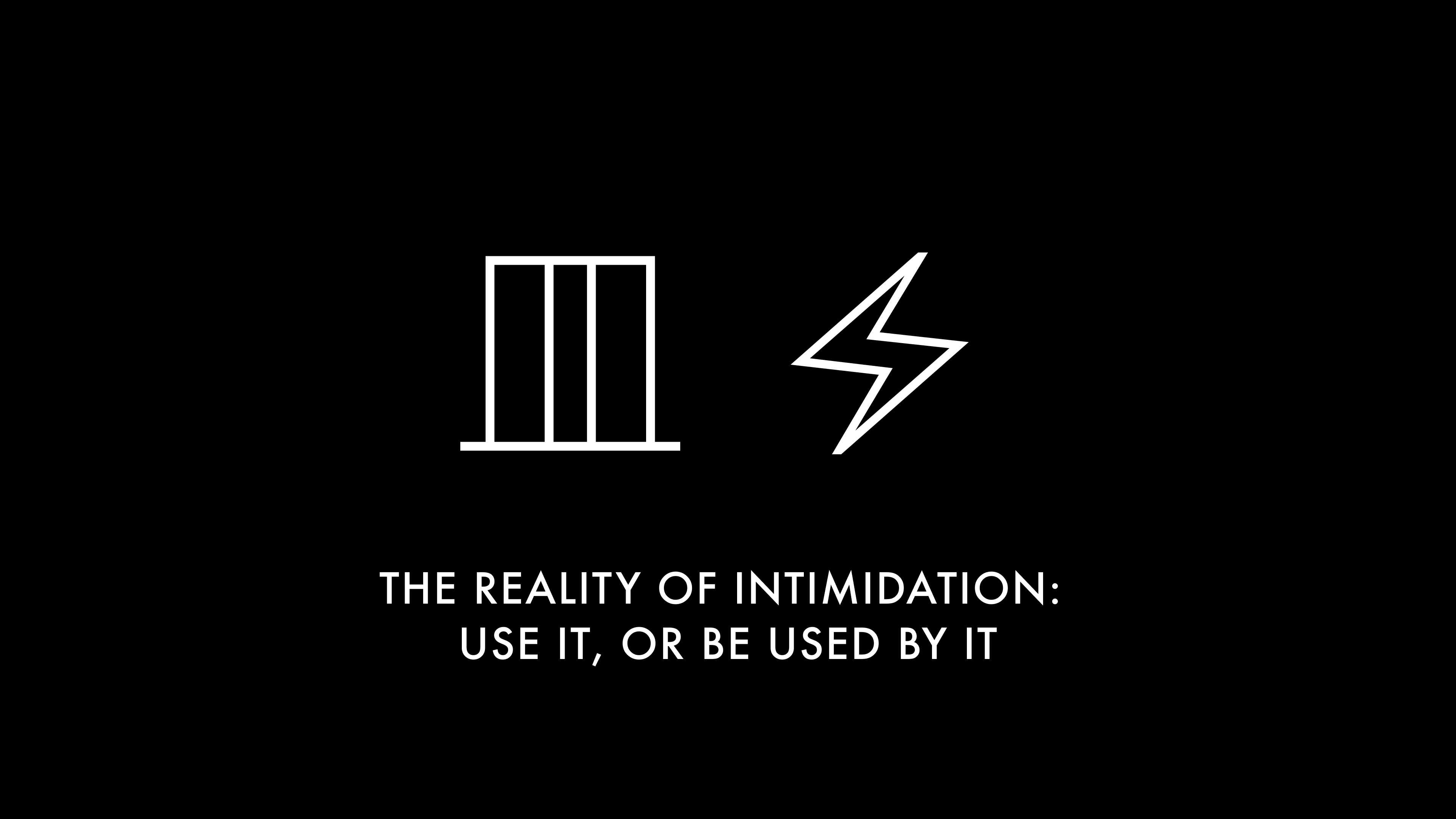Intimidation is real. It’s not a feel-good topic, but I’m not here to make you feel good—I’m here to tell you the truth. Intimidation runs business. It runs negotiations, competition, and the way people respond to you, period.
Most people get it wrong. They think intimidation is something to avoid or a tactic only used by bullies and cutthroat types. That’s a weak mindset. The reality is that intimidation exists everywhere, and if you’re not actively using it to your advantage, you’re being used by it. You’re either the intimidator, or you’re the intimidated.
Intimidation Is a Tool, Not a Threat
The first thing you need to understand is that intimidation isn’t about being a bully or throwing your weight around. It’s a tool—like any other tool in business—and it can be used strategically to gain an edge. Smart business people use intimidation to signal strength, confidence, and power. It’s the subtle cues you give off that tell people you mean business, you’re not to be messed with, and you won’t be easily swayed.
What most people don’t get is that intimidation isn’t always loud and aggressive. Sometimes, it’s quiet and understated. It’s the power of silence, of not reacting emotionally, and of maintaining unshakeable composure. The person who’s not easily rattled is often the most intimidating person in the room. You don’t have to be the loudest voice—you just have to be the most solid one.
The World Respects Strength, Not Weakness
Here’s the reality: People respect strength. They fear weakness. If you go into negotiations, business deals, or even personal interactions without a clear sense of your own power, you’ll get trampled. Weakness, or even the appearance of weakness, invites predators. It’s not personal—it’s just how the world works.
Think about it: If you’re negotiating a deal and you constantly defer, make concessions, or apologize for your position, you’ve already lost. You’ve signaled weakness, and the other party will exploit it. The world doesn’t give breaks to people who seem unsure or soft. You’ve got to project strength, even if you’re not feeling it 100% of the time. That’s how you gain the upper hand.
Intimidation Isn’t Manipulation—It’s Self-Protection
Now, some people will hear this and cry foul: “Dan, isn’t using intimidation manipulative?” No, it’s not. It’s called self-preservation. If you don’t stand firm, the world will roll right over you. In business, just like in nature, there’s always a hierarchy of power. Either you climb it, or you get crushed by it.
Using intimidation strategically doesn’t mean being dishonest or unethical. It means projecting an image of authority and control so that others know where you stand. It’s about protecting your interests, your time, and your resources from being siphoned off by those who mistake kindness for weakness.
Why People Get Intimidated
People get intimidated for one reason: They’re uncertain about their own position. The guy who walks into a meeting sweating bullets, afraid of how the deal will go, is already intimidated by the very situation he’s about to step into. The key to breaking free from intimidation is certainty—in yourself, in your value, and in the outcome you’re after.
Certainty is rare, and that’s why it’s intimidating. Most people live in a constant state of self-doubt, uncertainty, and insecurity. When they encounter someone who’s solid, self-assured, and unwilling to bend to pressure, it throws them off balance. That’s the power of intimidation in action. You’re not playing games or manipulating; you’re simply showing up with rock-solid certainty, and it unsettles people who lack it.
How to Harness Intimidation to Your Advantage
So, how do you develop and use intimidation to your benefit in business and life? First, get control over your emotions. Nothing signals weakness more than being reactive or emotional. If you can stay calm, controlled, and logical, even in high-pressure situations, you’ll automatically intimidate those who can’t.
Second, know your worth. The easiest way to get intimidated is by entering a deal or negotiation without a clear sense of your own value. If you don’t believe in your worth, you’ll backpedal, fold under pressure, or accept terms that aren’t in your favor. When you’re solid on your value, you’ll be far less likely to waver when others try to push you.
Third, master the art of silence. This one’s simple but powerful. In any interaction, the person who speaks less has the upper hand. Silence makes people uncomfortable—it forces them to reveal their cards. When you stay quiet, you project strength, confidence, and an ability to wait things out. The person who can wait longer wins.
Don’t Fear Intimidation—Master It
Too many people waste time fearing intimidation. They avoid situations where they might be put on the spot, pressured, or made to feel uncomfortable. That’s the wrong mindset. Instead of fearing intimidation, focus on mastering it. Learn to use it as a tool to protect your interests and project the kind of confidence that makes others think twice before trying to take advantage of you.
The reality is, the most successful people don’t run from intimidation—they leverage it. They understand that in a world full of uncertainty and self-doubt, confidence is power, and power is intimidating to those who lack it. The stronger you are—internally and externally—the more leverage you have in any situation.
So, stop fearing intimidation and start using it. You’re either using it to your advantage, or you’re being controlled by it. There’s no middle ground. Make sure you’re on the right side of that equation.

Leave a Reply